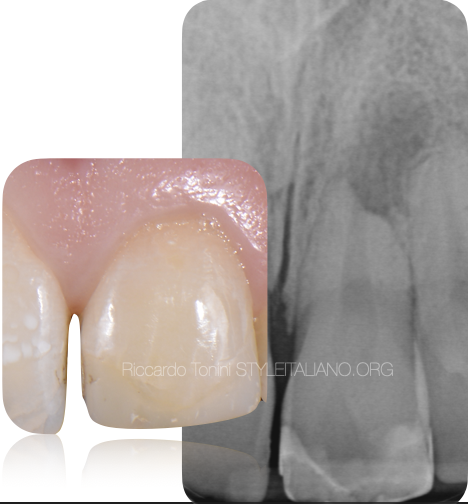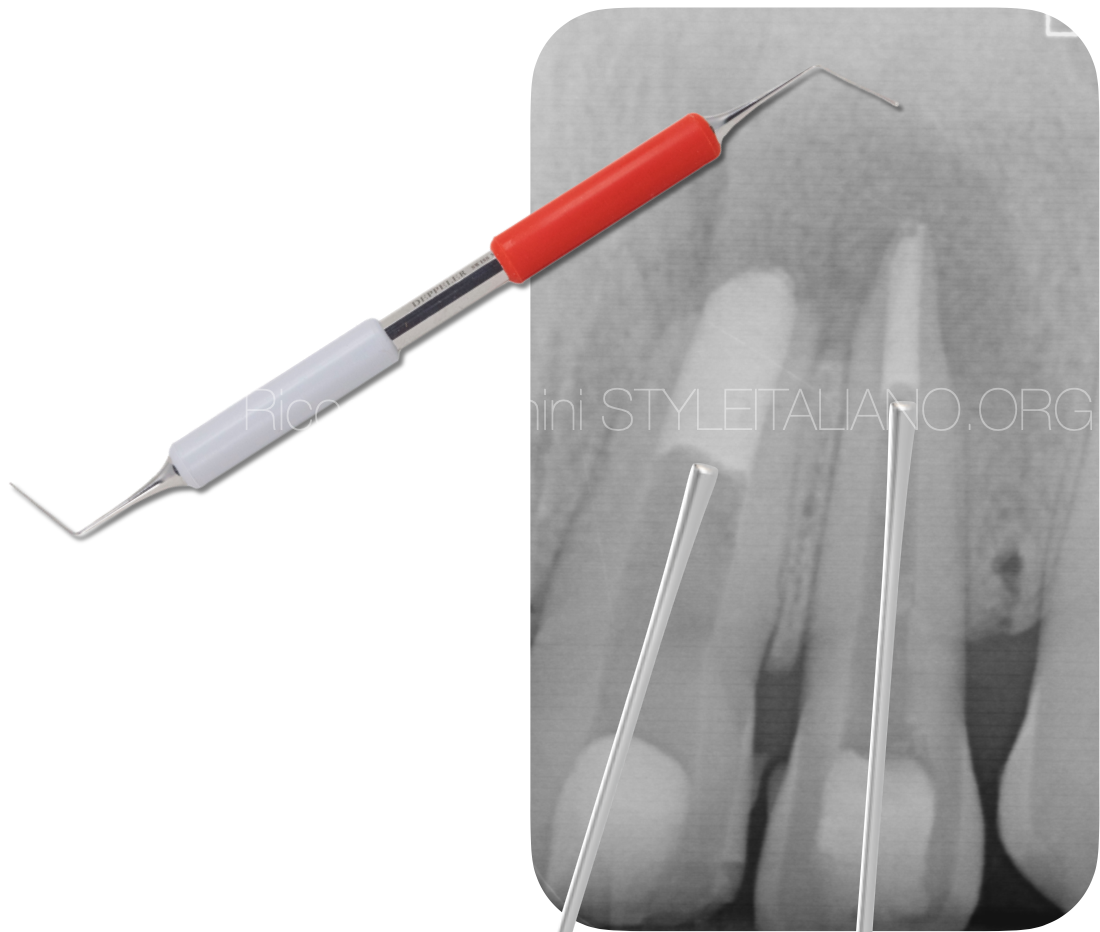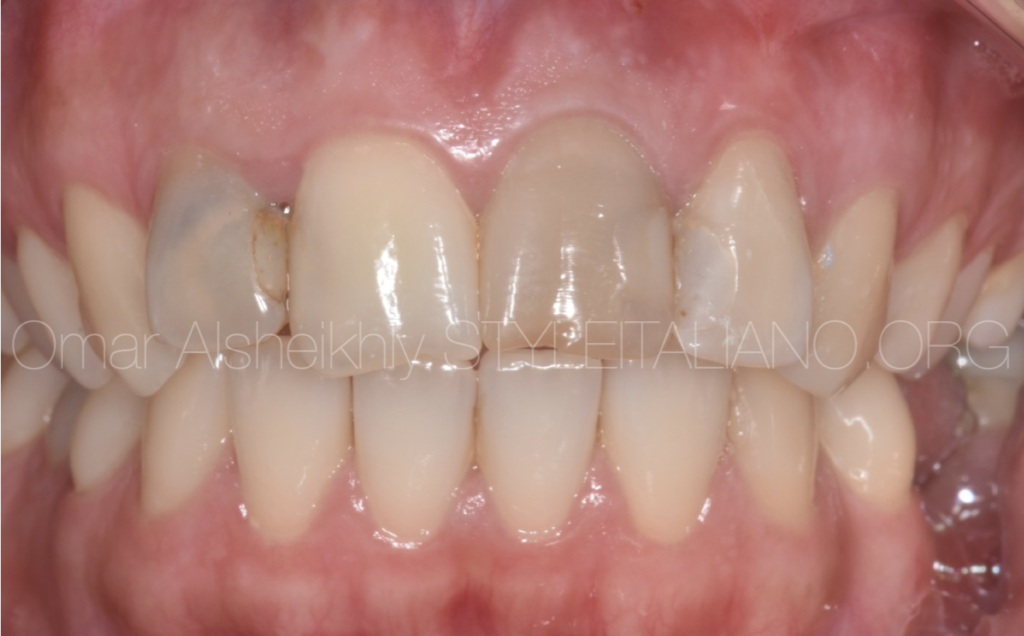
MTA apical plug and internal bleaching for Upper Central Incisor
05/01/2024
Fellow
Warning: Undefined variable $post in /var/www/vhosts/styleitaliano-endodontics.org/endodontics.styleitaliano.org/wp-content/plugins/oxygen/component-framework/components/classes/code-block.class.php(133) : eval()'d code on line 2
Warning: Attempt to read property "ID" on null in /var/www/vhosts/styleitaliano-endodontics.org/endodontics.styleitaliano.org/wp-content/plugins/oxygen/component-framework/components/classes/code-block.class.php(133) : eval()'d code on line 2
MTA (Mineral Trioxide Aggregate) apical plug is a technique used in endodontic treatment to create a barrier at the apex of the tooth. This innovative solution has revolutionized endodontics by providing excellent sealing ability and biocompatibility. When combined with internal tooth bleaching, the MTA apical plug technique offers an aesthetically pleasing and predictable outcome for discolored teeth. In this article, we will explore the MTA apical plug technique along with its combination with internal tooth bleaching for effective and reliable results.
What is MTA?
MTA is a bioactive cement that has gained immense popularity in endodontic treatments. It is composed of tricalcium silicate, dicalcium silicate, and bismuth oxide. MTA possesses unique characteristics that make it an ideal material for various dental procedures. These properties include exceptional sealing ability, biocompatibility, good marginal adaptation, as well as its ability to promote tissue healing and mineralization.
MTA Apical Plug Technique
The MTA apical plug technique involves the placement of an MTA barrier at the apex of the tooth during root canal treatment. This technique is commonly utilized in teeth with open apices or in cases where conventional root canal filling materials do not adequately seal the root canal system.
This article describes a case in which a 24-year-old girl presented with a palatal sinus tract accompanied by swelling in the area of the maxillary left incisor. At 8 years of age, she suffered a trauma to this area. A crown fracture had occurred and it was restored with composite resin. The patient and her mother told that the tooth was extirpated 4 months ago. The patient did not experience any discomfort, except for an occasional bad taste in his mouth. The tooth was asymptomatic, and the clinical examination revealed physiological mobility and discoloration
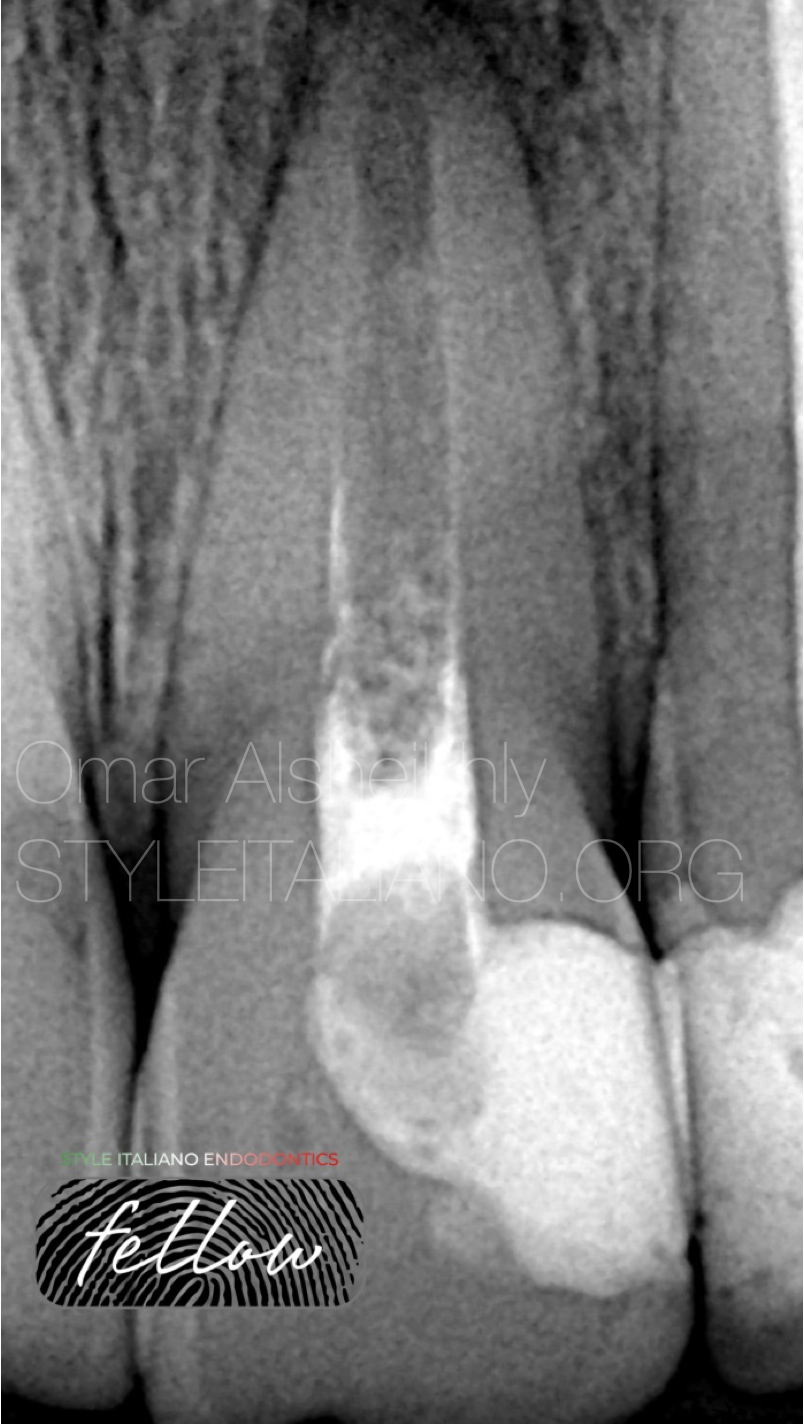
Fig. 1
Pre op xray shows root resorption and necrosis with an apical lesion. Diastema and tooth discoloration represented additional problems to manage.

Fig. 2
Rubber dam was secured over tooth 21 with a 210 rubber dam clamp (K-CLAMP) and liquid rubber dam was used to ensure the isolation.
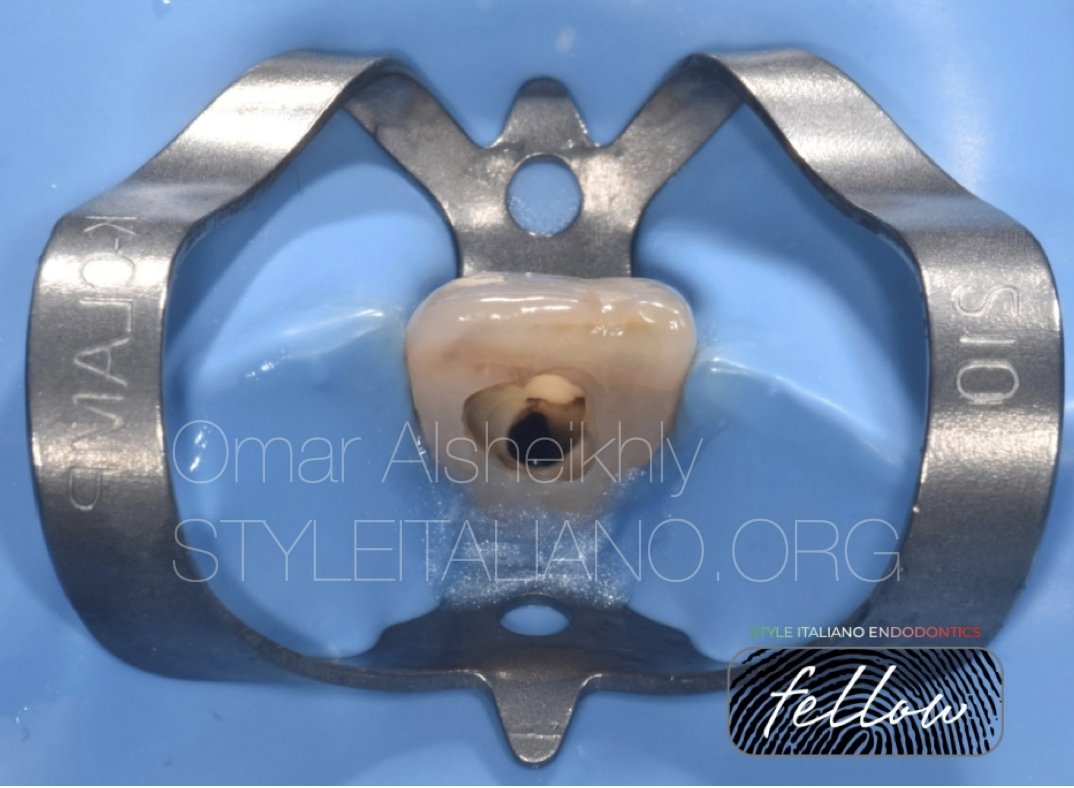
Fig. 3
The access cavity was drilled using a round carbide bur through the composite core. The pulp chamber was fully accessed and refined using a stainless steel diamond coated ultrasonic tip with and without water spray.
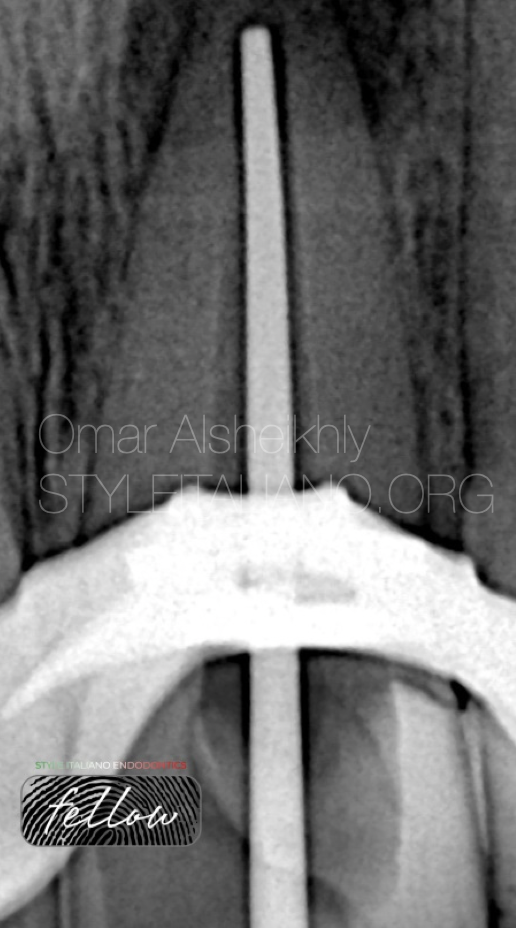
Fig. 4
The apical portion of the root canal is prepared to create a space for the MTA apical plug. The size of the apical plug is determined based on the tooth's anatomy and the extent of apical enlargement desired.
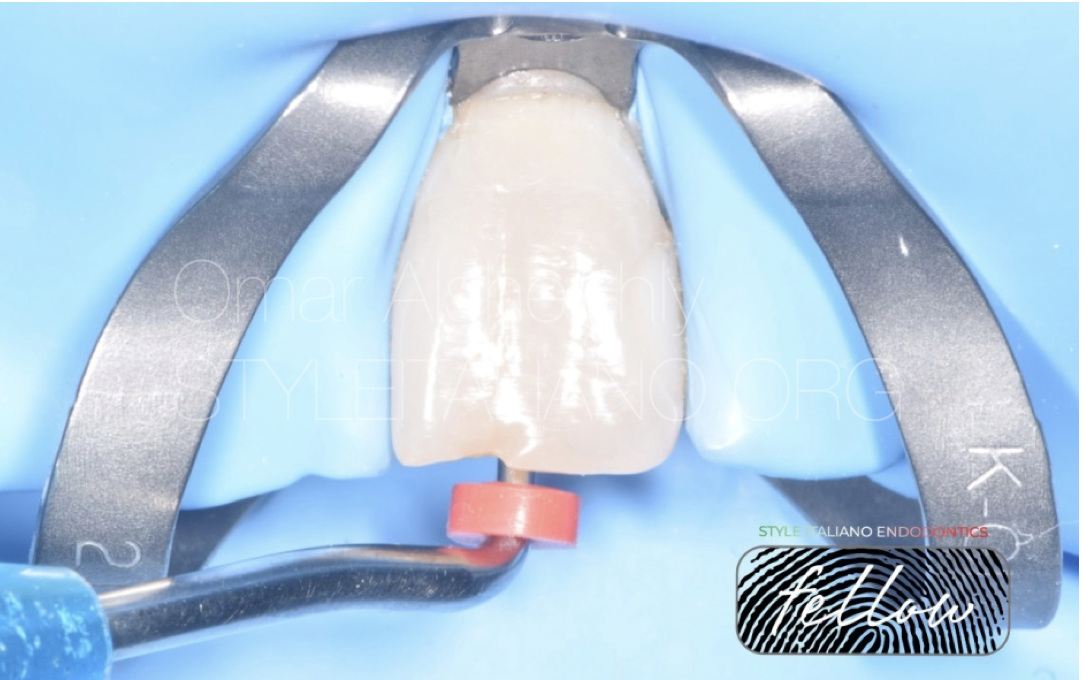
Fig. 5
The pluger inside the canal with full WL
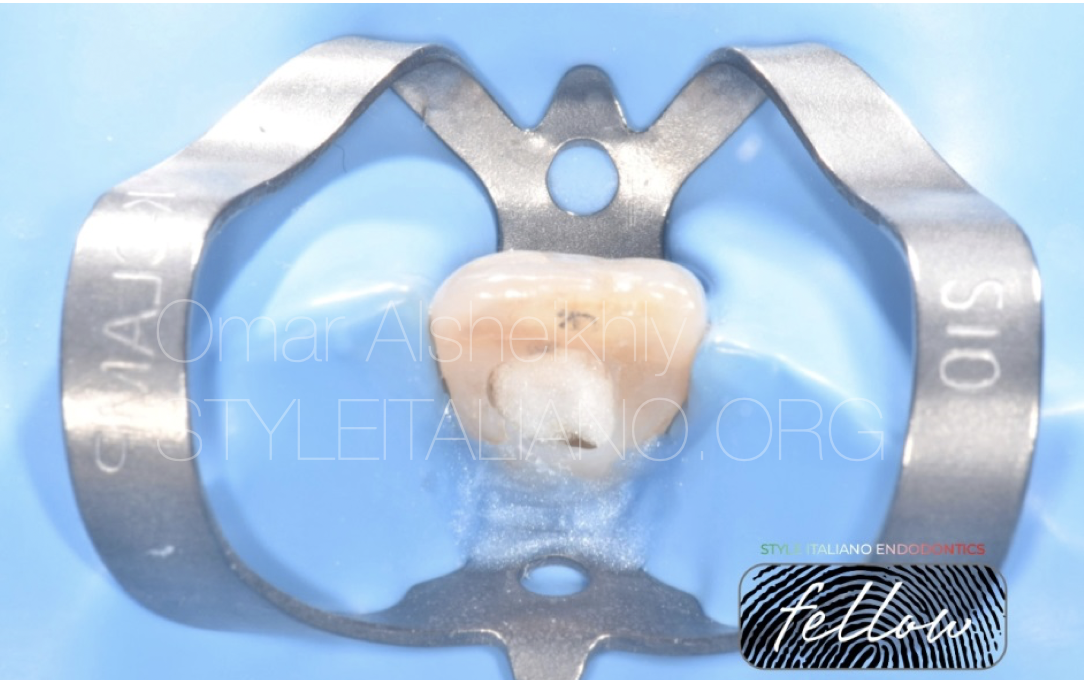
Fig. 6
Collagen sponge in placement at the apical region of the root canal
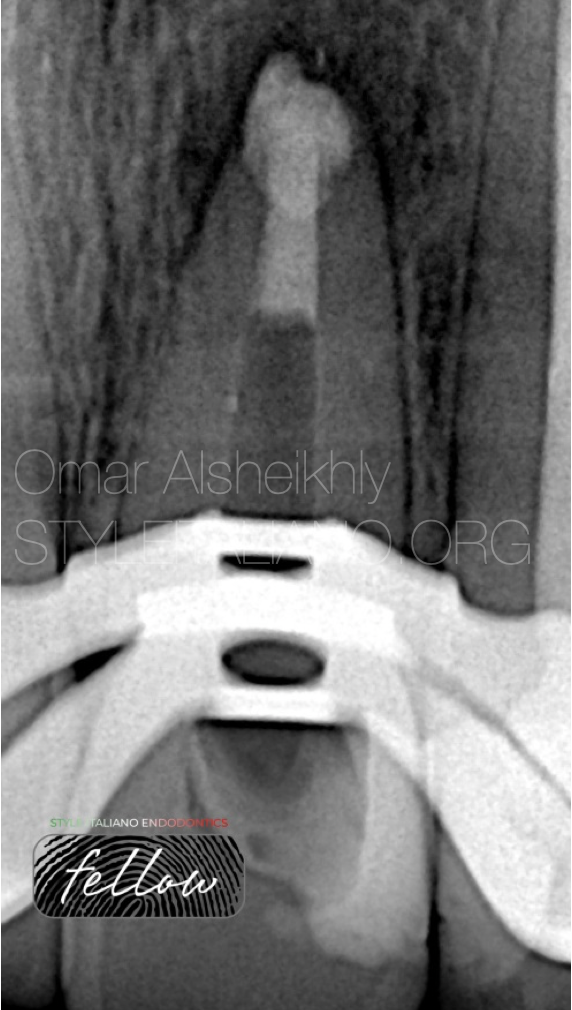
Fig. 7
The MTA cement is mixed according to the manufacturer's instructions and is then placed in the prepared apical area using a suitable carrier. The MTA cement gradually sets and hardens over time, forming a solid barrier at the apex of the tooth.
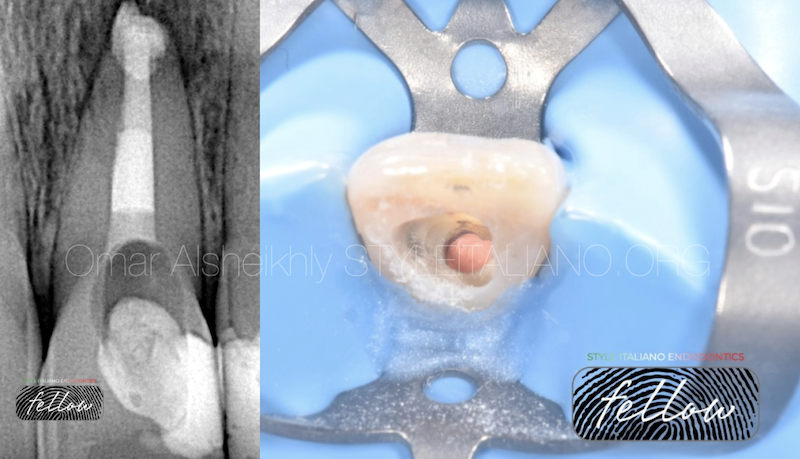
Fig. 8
After the MTA has set, the remaining root canal is filled with a suitable root canal filling material, such as gutta-percha and sealer.
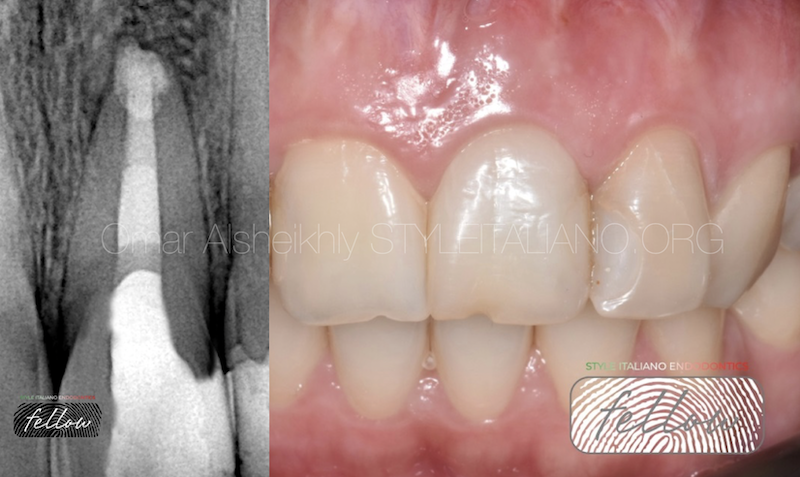
Fig. 9
Healing process and final restoration after 6 months.

Fig. 10
Bachelor of dental surgery (BDS) Ivan Horbachevsky Ternopil State Medical University UKRAIN 2011-2016
-Awarded the certificate of equivalency for the diploma Faculty of Dentistry \University of Baghdad IRAQ 2019
-MSc master in advanced Endodontics University of Siena \ ITALY 2021\2023
- SIE FELLOW MEMBER
Conclusions
The MTA apical plug technique, when combined with internal tooth bleaching, offers an innovative and effective solution for endodontic treatment and tooth discoloration. The MTA apical plug provides an excellent seal and promotes tissue healing, while internal tooth bleaching addresses intrinsic tooth discoloration, yielding a desirable aesthetic outcome. By incorporating these techniques, dental professionals can achieve successful results with improved patient satisfaction. further research and advancements in this field will continue to enhance the efficiency and success rates of MTA apical plug with internal tooth bleaching, providing even better outcomes in the future.
Bibliography
1. Neville BW, Damm DD, Allen CM, Chi AC. 2. Pathology of teeth. In: Neville BW, Damm DD, Allen CM, Chi AC, editors. Color atlas of oral and maxillofacial diseases. Philadelphia: Elsevier; 2019. p. 41–78.
2. Graziele Magro M, Carlos Kuga M, Adad Ricci W, Cristina Keine K, Rodrigues Tonetto M, Linares Lima S, Henrique Borges A, Garcia Belizário L, Coêlho Bandeca M. Endodontic management of open apex teeth using lyophilized collagen sponge and MTA cement: report of two cases. Iran Endod J. 2017;12(2):248–52.
3. Nayar S, Bishop K, Alani A. A report on the clinical and radiographic outcomes of 38 cases of apexification with mineral trioxide aggregate. Eur J Prosthodont Restor Dent. 2009;17(4):150–6.
4. Bücher K, Meier F, Diegritz C, Kaaden C, Hickel R, Kühnisch J. Long-term outcome of MTA apexification in teeth with open apices. Quintessence Int. 2016;47(6):473–82.



